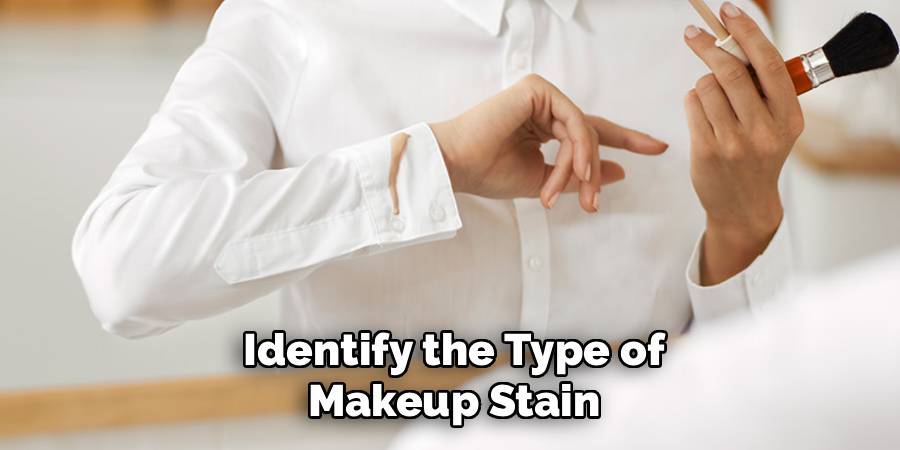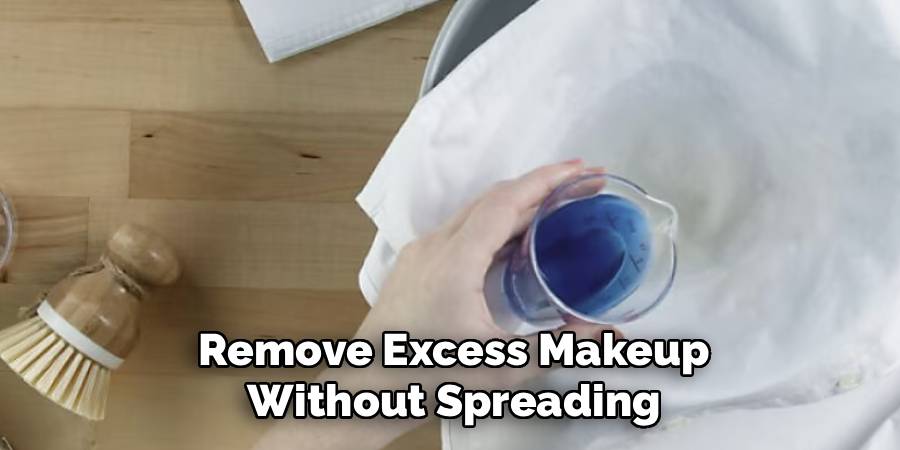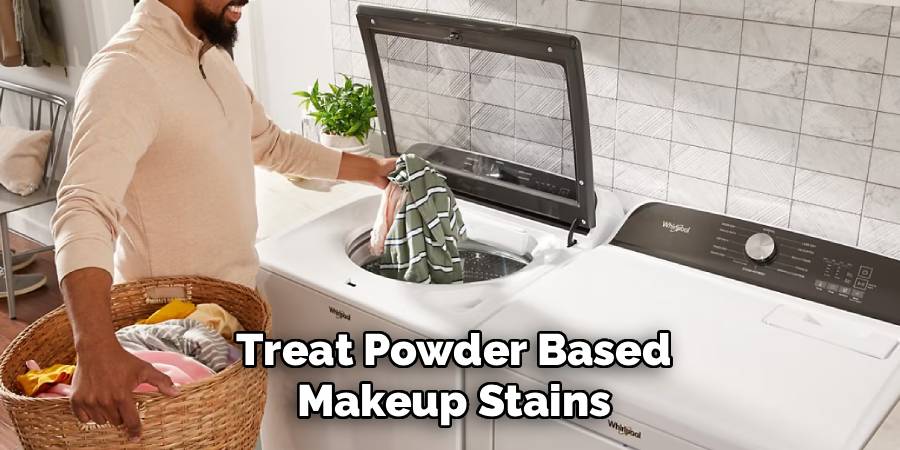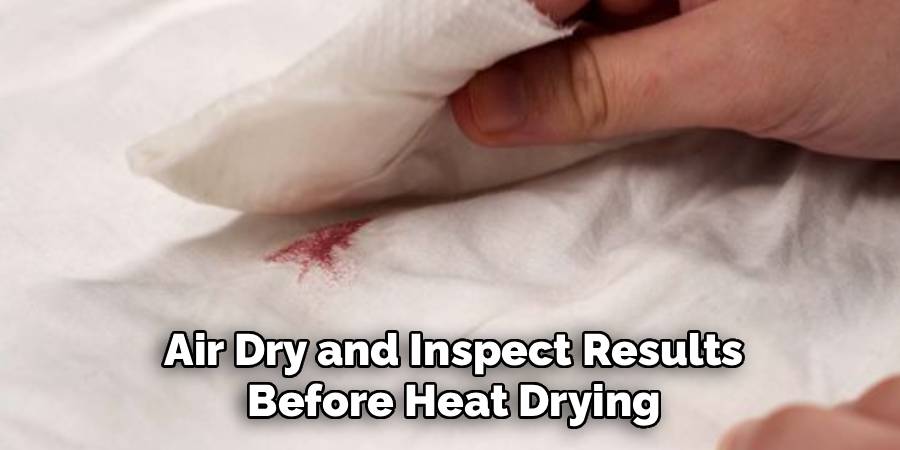Makeup mishaps happen to everyone, whether it’s a foundation smudge while getting dressed, lipstick accidentally brushing against your sleeve, or mascara transferred during a quick touch-up session. These beauty blunders can feel devastating, especially when they occur on your favorite outfit or an expensive piece of clothing. The good news is that most makeup stains don’t have to mean the end of your garment’s life.

Understanding how do you get makeup off clothes effectively can save you money, preserve your wardrobe, and reduce the stress of unexpected stains. The key lies in acting quickly, using the right techniques for different types of makeup products, and having the proper supplies on hand for emergency stain removal.
Different makeup products require different removal approaches because of their varying formulations. Oil-based foundations need different treatment than powder eyeshadows, while waterproof mascara presents unique challenges compared to regular lip gloss. This comprehensive guide will equip you with the knowledge and confidence to tackle any makeup stain, regardless of the product type or fabric involved.
Why Learning to Remove Makeup Stains from Clothes Matters
Makeup stains are among the most common clothing accidents, especially for those who wear cosmetics regularly or work in beauty-related fields. Learning proper removal techniques prevents you from discarding otherwise perfectly good clothing, saving hundreds of dollars annually on wardrobe replacements. Many people automatically assume makeup stains are permanent and throw away stained garments without attempting removal.
Professional dry cleaning for makeup stains can be expensive and isn’t always necessary when you know the right at-home techniques. Understanding fabric care and stain removal empowers you to handle emergencies confidently, whether at home or on the go.
9 Step-by-Step Guide: How Do You Get Makeup Off Clothes
Step 1: Identify the Type of Makeup Stain
Before attempting any removal technique, carefully examine the stain to determine what type of makeup product caused it. Foundation and concealer stains typically appear as flesh-toned smudges, while lipstick creates waxy, colorful marks on fabric surfaces. Powder products like eyeshadow or blush often leave dusty residue that may seem easier to remove but can actually embed deeply into fabric fibers. Oil-based makeup products penetrate fabric differently than water-based formulas, requiring specific treatment approaches for effective removal. Take note of the stain’s texture, color, and how fresh it appears, as older stains that have set into the fabric will need more intensive treatment than fresh ones.

Step 2: Act Quickly Before the Stain Sets
Time is your most valuable ally when dealing with makeup stains on clothing. Fresh stains are significantly easier to remove than those that have been allowed to dry and set into fabric fibers over hours or days. If possible, address the stain immediately after it occurs, even if you’re not at home with your full arsenal of cleaning supplies. Gently blot away excess makeup using a clean tissue or paper towel, being careful not to rub the stain deeper into the fabric. Avoid using water initially on oil-based makeup products, as this can cause the stain to spread rather than lift away from the material.
Step 3: Remove Excess Makeup Without Spreading
Using a clean spoon, knife edge, or similar tool, carefully scrape away any excess makeup from the fabric surface without pressing it further into the fibers. Work from the outside edges of the stain toward the center to prevent spreading the makeup to clean areas of the garment. For powder-based products, shake the garment gently to remove loose particles before beginning liquid treatment methods. Avoid rubbing or grinding the makeup into the fabric, as this embeds it deeper and makes removal more difficult. This preparatory step is crucial for preventing the stain from becoming larger during the actual cleaning process.
Step 4: Pre-Treat Oil-Based Makeup Stains
Oil-based makeup products like foundation, concealer, and lipstick require special handling due to their greasy composition. Apply a small amount of dish soap directly to the stain, as these detergents are specifically formulated to cut through oils and grease effectively. Gently work the soap into the fabric using your fingers or a soft brush, creating a light lather without being too aggressive.

Allow the soap to sit on the stain for 5-10 minutes to break down the oils before proceeding with washing. For particularly stubborn oil-based stains, you can also try makeup remover or micellar water as a pre-treatment, testing on an inconspicuous area first to ensure it won’t damage the fabric.
Step 5: Treat Powder-Based Makeup Stains
Powder makeup products like eyeshadow, blush, and setting powder require a different approach than oil-based cosmetics. Start by gently brushing away loose powder particles with a clean, dry brush or soft cloth, working from the outside of the stain inward. Create a paste using liquid laundry detergent and cold water, then apply it directly to the stained area. The paste helps lift powder particles that have settled into fabric weaves while providing cleaning agents to break down any binding ingredients in the makeup. Let the paste sit for 15-20 minutes before rinsing with cold water, checking to see if the stain has lifted completely before proceeding to machine washing.

Step 6: Apply Appropriate Stain Removal Techniques for Different Fabrics
Different fabric types require tailored approaches to prevent damage while effectively removing makeup stains. Delicate fabrics like silk, wool, or lace need gentler treatment with cool water and mild detergents to avoid shrinkage or fiber damage. Cotton and polyester blends can typically handle stronger cleaning agents and warmer water temperatures for more aggressive stain removal. Always check the garment’s care label before selecting your cleaning method, and test any cleaning solution on a hidden area first. For dry-clean-only garments, avoid home treatment and take the item to a professional cleaner as soon as possible, pointing out the stain and its source to help them choose the most effective cleaning method.
Step 7: Rinse and Check Before Machine Washing
After pre-treating the stain, thoroughly rinse the treated area with cold water to remove cleaning agents and loosened makeup particles. Examine the stain carefully under good lighting to determine if it has been completely removed or if additional treatment is needed. If traces of the stain remain visible, repeat the appropriate pre-treatment process rather than proceeding directly to machine washing, as heat from the wash cycle can permanently set remaining makeup into the fabric. Only proceed to machine washing once you’re confident the stain has been eliminated or significantly reduced. This step prevents disappointment and ensures the best possible outcome for your garment.

Step 8: Machine Wash According to Fabric Care Instructions
Once you’ve successfully pre-treated and checked the stain, wash the garment according to its care label instructions using your regular laundry detergent. Use the coolest water temperature recommended for the fabric type, as hot water can set any remaining makeup traces permanently into the fibers. Avoid using fabric softener during this wash cycle, as it can interfere with stain removal and may cause any residual makeup to cling to the fabric. Consider adding an oxygen-based bleach alternative if the fabric can safely handle it, as these products help lift stubborn stains without the harsh effects of chlorine bleach on colors and delicate materials.
Step 9: Air Dry and Inspect Results Before Heat Drying
After washing, inspect the previously stained area while the garment is still damp to check if the makeup has been completely removed. Air dry the item rather than using a heated dryer, as heat will permanently set any remaining stain traces that may not be immediately visible on wet fabric. Hang or lay flat to dry in a well-ventilated area away from direct sunlight, which can cause fading or discoloration. Once completely dry, examine the treated area again under various lighting conditions to ensure no traces of the stain remain. If any shadow or discoloration persists, repeat the entire treatment process before considering the use of heated drying methods.

Common Makeup Stain Culprits
Foundation and Concealer – These creamy or liquid products can easily smear onto fabrics and are often oil-based, making them tricky to remove.
Lipstick and Lip Gloss – Highly pigmented and often containing oils, lipstick and gloss stains can quickly penetrate fabrics.
Mascara – Waterproof mascara is particularly challenging as it’s designed to resist removal with water.
Eyeliner – Pencil, gel, and liquid eyeliners can all leave dark, noticeable marks on clothing or fabric surfaces.
Blush and Powder – Although dry, powdered makeup products like blush can still cling to fabrics, especially synthetic materials.
Self-Tanner – Streaks from self-tanner can easily transfer to clothing and bedding, leaving orange or brown stains.
Eyeshadow – Especially when shimmer or glitter is involved, eyeshadow can leave behind colorful or sparkly traces.
Nail Polish – Accidental spills or drips can create tough stains that require special removers for cleaning.
Frequently Asked Questions (FAQs)
Can I Use Regular Soap To Remove Foundation Stains?
Regular bar soap isn’t the most effective option for foundation removal because most formulations lack the degreasing agents needed to break down oil-based makeup. Dish soap works much better because it’s specifically designed to cut through oils and grease. However, if dish soap isn’t available, you can try regular liquid hand soap as a temporary solution. Apply it directly to the stain, work it in gently, and let it sit before rinsing with cold water.
What Should I Do If The Makeup Stain Has Already Dried?
Dried makeup stains require more intensive treatment but aren’t impossible to remove. Soak the stained area in cold water for 30 minutes to rehydrate the makeup, making it easier to lift from fabric fibers. Apply your chosen pre-treatment method and allow extra time for the cleaning agents to work—sometimes up to an hour for stubborn, set-in stains. You may need to repeat the treatment process multiple times before achieving complete removal.
Are Waterproof Makeup Products Harder To Remove From Clothes?
Yes, waterproof makeup products are formulated to resist removal and will be more challenging to eliminate from fabric. These products often contain stronger oils and waxes that bond more firmly with fabric fibers. Use an oil-based pre-treatment like makeup remover or even a small amount of coconut oil to break down the waterproof formula before applying regular stain removal techniques. Be patient and expect to repeat the process several times.
Can I Use Bleach On Makeup Stains?
Avoid using chlorine bleach on makeup stains, especially oil-based ones, as it can react with the oils and actually set the stain permanently or cause discoloration. Oxygen-based bleaches or bleach alternatives are safer options that can help lift stubborn stains without the harsh chemical reactions. Always check your fabric’s care label first, as some materials like wool or silk can be damaged even by gentler bleaching agents.
What If The Stain Doesn’t Come Out After Multiple Attempts?
If home treatment methods haven’t worked after several attempts, consider taking the garment to a professional cleaner who has access to specialized solvents and equipment. Point out the stain and explain what type of makeup caused it, as well as what home treatments you’ve already tried. Sometimes professional steam cleaning or specialized chemical treatments can remove stains that resist home remedies. However, be honest about your expectations, as some very old or set-in stains may be permanent.
Conclusion
Learning how do you get makeup off clothes effectively transforms frustrating accidents into manageable situations that don’t require wardrobe replacements or expensive professional cleaning. The key principles of successful makeup stain removal include acting quickly, identifying the makeup type, using appropriate pre-treatment methods, and following proper washing techniques.
Most makeup stains respond well to proper treatment when addressed promptly and correctly. Practice these methods, stay calm during emergencies, and enjoy the confidence that comes from knowing you can handle any cosmetic clothing crisis that comes your way.
About the Author
Jane Hubbard is a passionate beauty expert with a wealth of experience in makeup, hair, and overall beauty techniques. After years of working as a hairdresser specialist, she followed her entrepreneurial spirit and started her own consultancy business.
Jane has always been driven by her desire to help others feel confident in their own skin, and she does this by sharing her knowledge, experiences, and practical beauty tips. Through her consultancy, she empowers individuals to embrace their unique beauty, offering tailored guidance that boosts both self-esteem and personal style.
Professional Focus
- Specializes in makeup, hairstyling, and beauty consulting.
- Provides personalized beauty advice, tips, and techniques to help individuals feel confident in their appearance.
- Dedicated to staying up-to-date with the latest industry trends and developments.
- Passionate about creating a comfortable and empowering experience for every client.
Education History
- University of Craft and Design – Bachelor of Fine Arts (BFA) in Woodworking and Furniture Design
- Woodworking Apprenticeships – Extensive hands-on training with skilled craftsmen to refine carpentry and furniture making techniques
- Online Courses & Masterclasses – Continued education in advanced woodworking techniques, design principles, and specialized tools
Expertise:
- Makeup artistry, hairstyling, and beauty consulting.
- Personalized beauty techniques to enhance confidence and self-expression.
- Educating clients on how to maintain their beauty routines at home.
